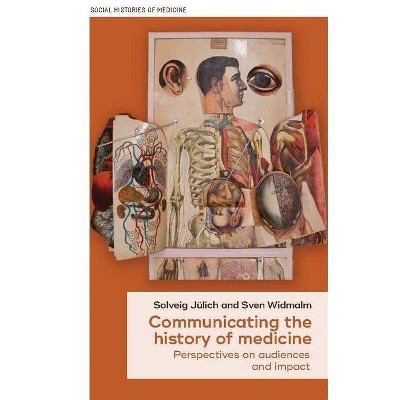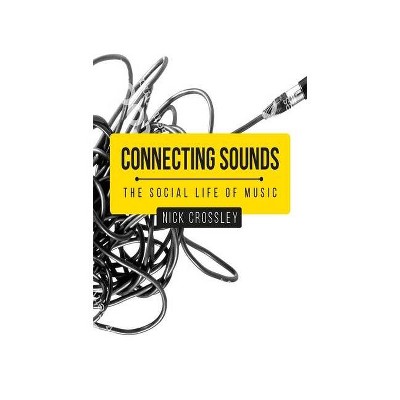Communicating the history of medicine - (Social Histories of Medicine) by Solveig Jülich & Sven Widmalm (Hardcover)

Similar Products
Products of same category from the store
AllProduct info
<p/><br></br><p><b> About the Book </b></p></br></br><i>Communicating the History of Medicine</i> offers a collection of case studies on academic outreach from historical and current perspectives. It questions the kind of linear thinking often found in policy or research assessment, instead offering a nuanced picture of both the promises and pitfalls of engaging audiences for research in the human...<p/><br></br><p><b> Book Synopsis </b></p></br></br><p>This collection explores the history of medicine's relationships with its audiences, from the early twentieth century to the present. Throughout, the authors discuss how historians of medicine and other humanities disciplines have interacted with - and impacted - their audiences. Topics examined across the ten chapters include medical education, policy making, exhibitions and museums, and film and television.<br /> <br /> Historians have always interacted with a variety of audiences and there is a common desire for research to appeal to broader audiences with impact beyond the humanities. For historians of medicine, these often include: government committees and commissions dealing with ethical issues in biomedicine; journalists asking for historical perspectives on new medical discoveries - as well as abuses and controversies; museum curators and visitors; healthcare practitioners and students and sometimes even medical researchers utilising historical material.<br /> <br /> By examining a range of case studies on academic outreach, <em>Communicating the history of medicine </em>seeks to challenge the idea that communication between researchers and their audiences is unidirectional. By employing a media theoretical perspective, this volume discusses how historians can create impact with audiences for academic knowledge production via 'audiencing'.</p><p/><br></br><p><b> From the Back Cover </b></p></br></br>This collection explores the history of medicine's relationships with its audiences, from the early twentieth century to the present. Throughout, the authors discuss how historians of medicine and other humanities disciplines have interacted with - and impacted - their audiences. Topics examined across the ten chapters include medical education, policy making, exhibitions and museums, and film and television. Historians have always interacted with a variety of audiences and there is a common desire for research to appeal to broader audiences with impact beyond the humanities. For historians of medicine, these often include: government committees and commissions dealing with ethical issues in biomedicine; journalists asking for historical perspectives on new medical discoveries - as well as abuses and controversies; museum curators and visitors; healthcare practitioners and students and sometimes even medical researchers utilising historical material. By examining a range of case studies on academic outreach, <i>Communicating the history of medicine </i>seeks to challenge the idea that communication between researchers and their audiences is unidirectional. By employing a media theoretical perspective, this volume discusses how historians can create impact with audiences for academic knowledge production via 'audiencing'.<p/><br></br><p><b> About the Author </b></p></br></br>Solveig Jülich Professor at the Department of History of Science and Ideas at Uppsala University <p/>Sven Widmalm Professor at the Department of History of Science and Ideas at Uppsala University
Price History
Cheapest price in the interval: 120 on November 8, 2021
Most expensive price in the interval: 120 on December 22, 2021
Price Archive shows prices from various stores, lets you see history and find the cheapest. There is no actual sale on the website. For all support, inquiry and suggestion messages communication@pricearchive.us




















